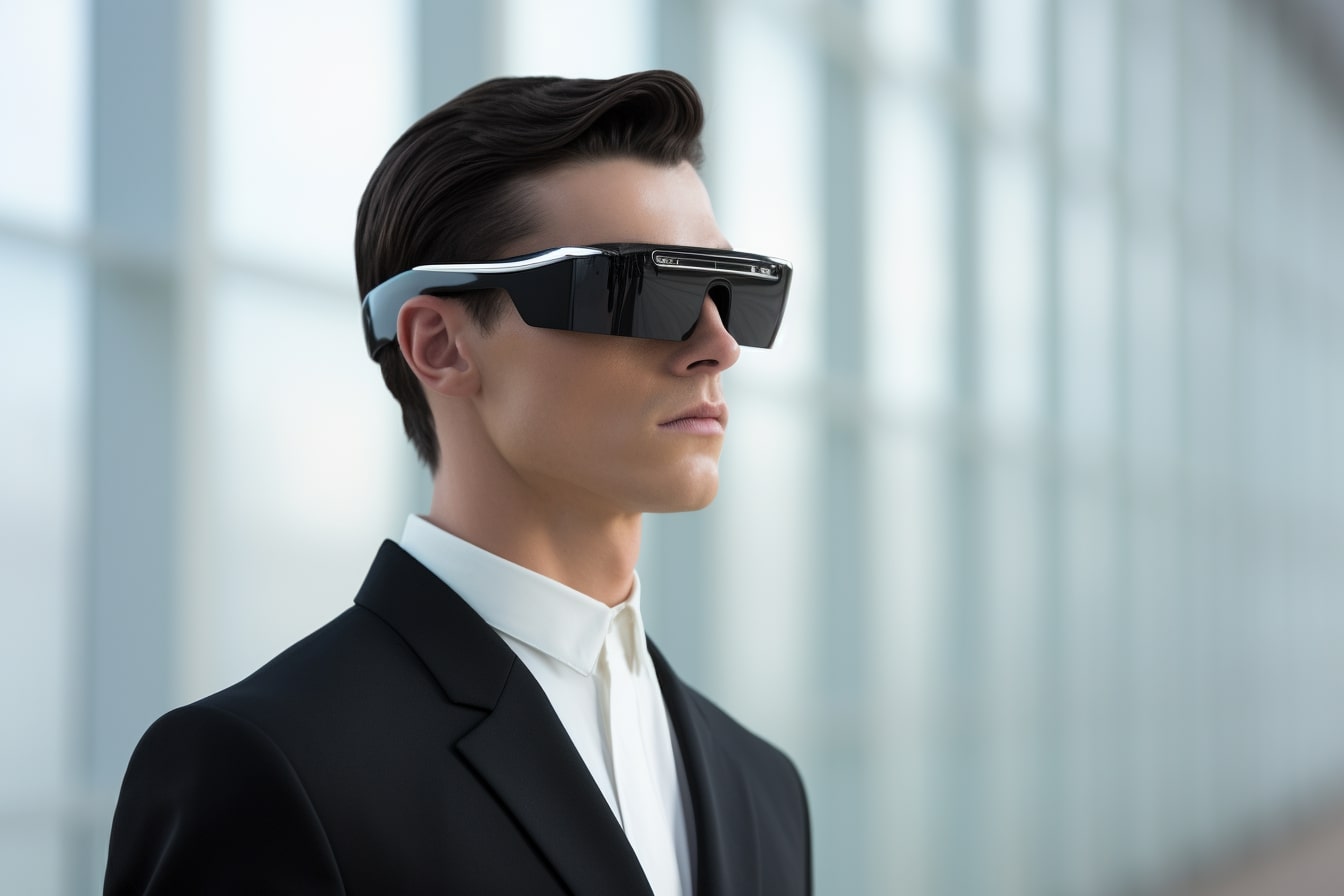Smart glasses, stupid manners? How does augmented reality affect the balance of social power?

summary: Researchers are exploring how smart augmented reality (AR) glasses affect interactions between the wearer and those around him.
The study found that while the technology eases the anxiety of the person wearing the glasses, it can also be debilitating to others who are not sure what is going on on the other side of the lens. Non-wearers report being concerned about the potential for unauthorized recordings and feeling uncomfortable about filters changing their appearance.
The researchers suggest design improvements such as a recording indicator light to help address these ethical concerns.
key facts:
- The study involved five pairs of individuals discussing survival in the desert while one of them wore an augmented reality headset from Snap Inc. Equipped with custom filters that alter the appearance of those who don’t wear them.
- Non-wearers reported feeling emasculated and uncomfortable, citing concerns about unauthorized recordings and a lack of control over their appearance.
- The study proposes design solutions, such as recording indicator light and transparent lenses, to improve ethical considerations and social dynamics around AR smart glasses.
source: Cornell University
Researchers at Cornell University said that a person wearing augmented reality (AR) or “smart” glasses can Google your face, turn you into a cat, or record your conversation — and this creates a huge power imbalance.
Currently, most of the work on augmented reality glasses is primarily focused on the wearer’s experience. Researchers from Cornell Ann S. Powers College of Computing and Information Sciences and Brown University teamed up to explore how this technology affects interactions between the wearer and another person.

Their explorations showed that although the device made wearers less anxious overall, things weren’t so rosy on the other side of the glasses.
Jenny Fu, a doctoral student in the field of information science, presented the findings in a new study, “Negotiating Bilateral Interactions Through the Lens of Augmented Reality Glasses,” at the 2023 ACM Interactive Systems Design Conference in July.
Augmented reality glasses superimpose virtual objects and text on the field of view to create a mixed reality world for the user.
Some designs are big and bulky, but with the advancement of augmented reality technology, smart glasses are becoming increasingly difficult to distinguish from regular ones, raising fears that wearers could secretly record someone or even produce fake looks like them.
For the new study, Fu and co-author Multi Jung, associate professor of information sciences and Nancy H.’62 and Philip M.’62 Bicentennial Young Faculty Fellow, worked with Ji Won Chung, PhD student, and Jeff Huang, associate professor of science. Computers, at Brown University, and Zachary Diocadez-Smith, an independent designer of extended reality.
They observed five pairs of individuals – wearers and non-wearers – as each pair discussed a desert survival activity. The wearer received Spectacles, a prototype AR headset, on loan from Snap Inc., the company behind Snapchat.
The glasses look like avant-garde sunglasses and, according to the study, are equipped with a video camera and five custom filters that turn the wearer into a deer, cat, bear, clown or bunny.
After the activity, the duo engaged in a participatory design session where they discussed how to improve AR glasses, for both wearers and non-wearers. The participants were also interviewed and asked to reflect on their experiences.
According to the wearers, the fun filters reduced their anxiety and provided them with comfort during exercise. However, people who did not wear the lenses reported feeling weak because they did not know what was happening on the other side of the lenses.
They also felt upset that the filters denied them control over their appearance. The possibility of the wearer recording it in secret without his consent—particularly when he does not know what it looks like—also puts the non-wearer at a disadvantage.
However, people who did not wear it weren’t completely helpless. A few demanded to know what the wearer was seeing, moving their faces or bodies to avoid the filters – giving them some control in negotiating their existence in the invisible world of mixed reality. “I think this is the most important thing I learned from this study: I am stronger than I thought,” Fu said.
Another issue is that the glasses, like many augmented reality glasses, have darkened lenses so that the wearer can see the virtual images displayed. The researchers reported that this lack of transparency also worsened the quality of social interaction.
“There is no direct eye contact, which makes people very confused, because they don’t know where the person is looking,” Fu said. “And that makes their experience of this conversation less enjoyable, because the glasses blocked out all of these nonverbal interactions.”
To create more positive experiences for people on either side of the lenses, study participants suggested that smart glasses designers add a display and a recording LED, so that people nearby know what the wearer is seeing and recording.
Fu also suggests that designers test out their glasses in a social setting and go through a participatory design process like the one in their study. In addition, she said, they should consider these video interactions as a source of data.
In this way, those who don’t wear them can have a voice in the creation of the impending mixed reality world.
Funding: This work received support from the National Science Foundation.
About neurotechnology and psychology research news
author: Becca Boyer
source: Boston University
communication: Becca Boyer – Boston University
picture: Image credited to Neuroscience News
Original search: The results were presented at the 2023 ACM Interactive Systems Design Conference.
Source link





